How to Create a Small Wildlife Pond in Your Garden
If you’ve always fancied a pond but think your space might be too small, or making one might be tricky, read on...
Sarah Alcroft
7 August 2023
Houzz UK Editorial Team
There are many reasons to have a pond in your garden, not least to help our beleaguered wildlife. According to the Royal Horticultural Society, “During the past century, nearly 70% of ponds have been lost from the UK countryside.”
Of course, helping wildlife by having a pond also means you get to enjoy watching the creatures you attract, providing another reason to spend time outdoors amid nature. And it brings life and movement into your garden, with gleaming water and pretty plants not suitable for standard borders, such as waterlilies and sunny marsh marigolds.
The good news is, wildlife ponds (which don’t contain fish) don’t have to be big or expensive. Here, three experts talk through where to site a pond, how and what to plant, and which creatures it’s likely to attract.
Professional advice from: Jane Ashley of Jane Ashley Garden Design; Claudia de Yong of Claudia de Yong Garden Design; Fiona Lamb of Fiona Lamb Design
Of course, helping wildlife by having a pond also means you get to enjoy watching the creatures you attract, providing another reason to spend time outdoors amid nature. And it brings life and movement into your garden, with gleaming water and pretty plants not suitable for standard borders, such as waterlilies and sunny marsh marigolds.
The good news is, wildlife ponds (which don’t contain fish) don’t have to be big or expensive. Here, three experts talk through where to site a pond, how and what to plant, and which creatures it’s likely to attract.
Professional advice from: Jane Ashley of Jane Ashley Garden Design; Claudia de Yong of Claudia de Yong Garden Design; Fiona Lamb of Fiona Lamb Design
What is a wildlife pond?
These ponds are aimed at attracting insects, amphibians and birds, and don’t contain fish. “It’s best not to have fish in a wildlife pond, as they will eat lots of the little creatures, including tadpoles,” Jane Ashley says.
The good news is, creating one can be a relatively straightforward task. “Unlike a fish pond, when making a wildlife pond you’re creating a natural, self-sustaining ecosystem, so there should be no need for pumps, filters or other equipment,” Fiona Lamb says.
It doesn’t have to be big, either. “Any form of water in the garden is a magnet for wildlife,” Claudia de Yong says.
These ponds are aimed at attracting insects, amphibians and birds, and don’t contain fish. “It’s best not to have fish in a wildlife pond, as they will eat lots of the little creatures, including tadpoles,” Jane Ashley says.
The good news is, creating one can be a relatively straightforward task. “Unlike a fish pond, when making a wildlife pond you’re creating a natural, self-sustaining ecosystem, so there should be no need for pumps, filters or other equipment,” Fiona Lamb says.
It doesn’t have to be big, either. “Any form of water in the garden is a magnet for wildlife,” Claudia de Yong says.
What can I expect to attract?
“All sorts of different creatures will visit,” Jane says. “You’ll have a good chance of attracting amphibians such as frogs, toads and maybe, if you’re lucky, newts. You’re very likely to be visited by dragonflies and damselflies.
“Other water creatures such as pond-skaters and water beetles may well appear, and you’ll also attract pollinators,” she continues. “If there’s a shallow area, you’ll find lots of birds will visit to bathe.”
“Hedgehogs and foxes might visit, too,” Claudia adds.
Need help to get the pond right and make it look natural? Find gardeners and garden designers in your area on Houzz.
“All sorts of different creatures will visit,” Jane says. “You’ll have a good chance of attracting amphibians such as frogs, toads and maybe, if you’re lucky, newts. You’re very likely to be visited by dragonflies and damselflies.
“Other water creatures such as pond-skaters and water beetles may well appear, and you’ll also attract pollinators,” she continues. “If there’s a shallow area, you’ll find lots of birds will visit to bathe.”
“Hedgehogs and foxes might visit, too,” Claudia adds.
Need help to get the pond right and make it look natural? Find gardeners and garden designers in your area on Houzz.
How much room do I need?
The larger the pond, the more wildlife it will attract and the easier it will be to keep the water quality good, but it can essentially be any size.
Wildlife ponds can be shallower than fish ponds. “The depth should ideally be around 30cm to 60cm at the deepest part, but be sure to have a range of depths and at least one gently sloping side,” Jane says.
“The depth will be determined by the requirements of certain plants. However, a depth of 20cm to 60cm varied across a pond is suitable for most flora and fauna,” Claudia agrees. “When making a pond, the key to success is to get the levels right.”
The larger the pond, the more wildlife it will attract and the easier it will be to keep the water quality good, but it can essentially be any size.
Wildlife ponds can be shallower than fish ponds. “The depth should ideally be around 30cm to 60cm at the deepest part, but be sure to have a range of depths and at least one gently sloping side,” Jane says.
“The depth will be determined by the requirements of certain plants. However, a depth of 20cm to 60cm varied across a pond is suitable for most flora and fauna,” Claudia agrees. “When making a pond, the key to success is to get the levels right.”
Is it ok in sun or shade?
It’s best not to site your pond in deep shade. “Ideally, you’d have some sun, but not too much, especially if the pond is very tiny,” Jane says. “The sunnier it is, the better for some plants such as waterlilies. On the other hand, too much sun may lead to problems with algae and blanketweed.”
“If you want a good, balanced ecosystem, then it’s best to site the pond where it will receive the most amount of daylight, away from overhanging trees, and sheltered from strong winds that can lead to evaporation,” Claudia says.
If you do have to put your pond near trees, Jane suggests you temporarily cover it with a net in the autumn to collect fallen leaves.
It’s best not to site your pond in deep shade. “Ideally, you’d have some sun, but not too much, especially if the pond is very tiny,” Jane says. “The sunnier it is, the better for some plants such as waterlilies. On the other hand, too much sun may lead to problems with algae and blanketweed.”
“If you want a good, balanced ecosystem, then it’s best to site the pond where it will receive the most amount of daylight, away from overhanging trees, and sheltered from strong winds that can lead to evaporation,” Claudia says.
If you do have to put your pond near trees, Jane suggests you temporarily cover it with a net in the autumn to collect fallen leaves.
How should I form the pond?
For the base of your pond, you can buy a rigid, preformed liner made from plastic or fibreglass, or use a flexible liner made from butyl (a synthetic rubber with a 25- to 50-year lifespan). Mark out the pond shape and dig out the profile, making sure there’s a gently sloping area and shelves at different depths.
“Building shelves into the sides will encourage different species to use different parts of the pond,” Fiona says. “Birds can use the shallower areas to drink and bathe and amphibians can spawn eggs.”
Using a liner gives you the greatest flexibility in terms of shape, but you’ll need to make sure the ground is prepared. “After digging the area, make sure the soil is clear of stones and roots before putting down a layer of sand. Add a layer of protective underlay fabric, then place the liner over the underlay,” Claudia says. “Remember to order more liner than the size of pond to allow for folds and depth.”
Jane suggests the layer of sand is at least 5cm deep “to protect it from puncture by any stones that work up from the soil below”.
For the base of your pond, you can buy a rigid, preformed liner made from plastic or fibreglass, or use a flexible liner made from butyl (a synthetic rubber with a 25- to 50-year lifespan). Mark out the pond shape and dig out the profile, making sure there’s a gently sloping area and shelves at different depths.
“Building shelves into the sides will encourage different species to use different parts of the pond,” Fiona says. “Birds can use the shallower areas to drink and bathe and amphibians can spawn eggs.”
Using a liner gives you the greatest flexibility in terms of shape, but you’ll need to make sure the ground is prepared. “After digging the area, make sure the soil is clear of stones and roots before putting down a layer of sand. Add a layer of protective underlay fabric, then place the liner over the underlay,” Claudia says. “Remember to order more liner than the size of pond to allow for folds and depth.”
Jane suggests the layer of sand is at least 5cm deep “to protect it from puncture by any stones that work up from the soil below”.
What about disguising the liner edge?
If you use a flexible liner, the edges will bulk up and be visible above the pond, but there are ways to hide it.
“You can use a layer of pebbles and gravel or butt turf up to the edges,” Claudia says. “You can also plant along the edges.”
“Alternatively, you can create a more formal edging to your pond using paving or brickwork to retain the liner,” Fiona says. “As long as you allow easy access into and out of the water, wildlife will still find your pond.”
“You can buy liner that has gravel as part of it (known as stone-faced liner),” Jane adds, “which can help you conceal the edges. It will look more natural if you partly cover it with a mix of other pebbles and gravel.”
If you use a flexible liner, the edges will bulk up and be visible above the pond, but there are ways to hide it.
“You can use a layer of pebbles and gravel or butt turf up to the edges,” Claudia says. “You can also plant along the edges.”
“Alternatively, you can create a more formal edging to your pond using paving or brickwork to retain the liner,” Fiona says. “As long as you allow easy access into and out of the water, wildlife will still find your pond.”
“You can buy liner that has gravel as part of it (known as stone-faced liner),” Jane adds, “which can help you conceal the edges. It will look more natural if you partly cover it with a mix of other pebbles and gravel.”
How can I ensure wildlife access?
A gentle slope on at least one side is crucial. Even in this tiny square pond, pebbles have been stacked to form a bank. “Having a layer of flat stones and gravel sloping down to create a ‘beach’ on one side will give amphibians and insects better access in and out, as well as helping smaller insects, such as bees, drink without falling in,” Claudia says.
“It will also provide an escape route for anything that may fall into the pond by mistake,” Fiona says.
“Letting grass or plants grow along one side of the pond will provide wildlife with the perfect cover away from predators,” Claudia adds.
A gentle slope on at least one side is crucial. Even in this tiny square pond, pebbles have been stacked to form a bank. “Having a layer of flat stones and gravel sloping down to create a ‘beach’ on one side will give amphibians and insects better access in and out, as well as helping smaller insects, such as bees, drink without falling in,” Claudia says.
“It will also provide an escape route for anything that may fall into the pond by mistake,” Fiona says.
“Letting grass or plants grow along one side of the pond will provide wildlife with the perfect cover away from predators,” Claudia adds.
How can I make it look natural?
The trick to making a pond look as natural as possible is to blur the edges. “Have an irregular shape and use lots of plants, both in the soil around the edges, and on planting shelves within the pond,” Jane says.
Also, site it on the edge of a planted area, not in the centre of a lawn or paving. “This will not only seem more natural, it will also provide good cover for the little creatures who access the pond,” she says.
“If using stone, choose a locally sourced one and think about how it’s positioned to look as natural as possible. This is quite an art,” Claudia says.
Also think local when it comes to the planting. “Plant around the pond with native species to help it blend into the existing garden,” she says.
The trick to making a pond look as natural as possible is to blur the edges. “Have an irregular shape and use lots of plants, both in the soil around the edges, and on planting shelves within the pond,” Jane says.
Also, site it on the edge of a planted area, not in the centre of a lawn or paving. “This will not only seem more natural, it will also provide good cover for the little creatures who access the pond,” she says.
“If using stone, choose a locally sourced one and think about how it’s positioned to look as natural as possible. This is quite an art,” Claudia says.
Also think local when it comes to the planting. “Plant around the pond with native species to help it blend into the existing garden,” she says.
Can I fill the pond with a hose if it’s not due to rain?
“Rainwater is best, as it has lower levels of nitrogen and phosphorous than tap water,” Jane says. “Excessive nitrogen is a problem, because it encourages blanketweed and duckweed. However, unless you have a rainwater collection system, you’ll probably have to use some tap water, too, and the pond should cope.”
If you do use tapwater, Claudia recommends letting it settle and neutralise for a few days before introducing plants. If you’re topping up an already planted pond, leave the water in a bucket for a couple of days before adding it.
“Rainwater is best, as it has lower levels of nitrogen and phosphorous than tap water,” Jane says. “Excessive nitrogen is a problem, because it encourages blanketweed and duckweed. However, unless you have a rainwater collection system, you’ll probably have to use some tap water, too, and the pond should cope.”
If you do use tapwater, Claudia recommends letting it settle and neutralise for a few days before introducing plants. If you’re topping up an already planted pond, leave the water in a bucket for a couple of days before adding it.
How do I establish plants?
To introduce plants into your pond, you can use either fabric planting pockets or aquatic planting baskets.
If you’re adding deep-water plants, such as lilies, baskets are easiest. “Line them with hessian, then fill them with aquatic compost or garden soil that hasn’t been fertilised recently; a heavy clay or loam is best,” Jane says. “Put a layer of washed pea shingle or gravel on top to keep the soil or compost in place.
“Baskets for marginal plants are also a bit easier to maintain when the plants grow large and need thinning, but planting into pockets may look more natural,” she says.
“You can add plants soon after planting, ideally a week or two after filling,” she says. “Then sit back and wait for the plants to grow and wildlife to find you!”
For the edge of the pond, you can also buy pre-planted coir rolls and mats, Claudia adds.
To introduce plants into your pond, you can use either fabric planting pockets or aquatic planting baskets.
If you’re adding deep-water plants, such as lilies, baskets are easiest. “Line them with hessian, then fill them with aquatic compost or garden soil that hasn’t been fertilised recently; a heavy clay or loam is best,” Jane says. “Put a layer of washed pea shingle or gravel on top to keep the soil or compost in place.
“Baskets for marginal plants are also a bit easier to maintain when the plants grow large and need thinning, but planting into pockets may look more natural,” she says.
“You can add plants soon after planting, ideally a week or two after filling,” she says. “Then sit back and wait for the plants to grow and wildlife to find you!”
For the edge of the pond, you can also buy pre-planted coir rolls and mats, Claudia adds.
What type of plants should I choose and where should they be located?
You need different types of plants for different positions in the pond. “Pond plants are divided into: deep-water; floating; oxygenators; marginals and bog,” Claudia says. “They need to be positioned at their correct depths according to type.”
Oxygenators Often referred to as pondweed, these provide valuable habitat and also help oxygenate the water. “The one I like best is hornwort (Ceratophyllum demersum),” Jane says. “It looks appealing and is easy to pull out when it grows too much. I also like water starwort (Callitriche stagnalis), which has pretty, star-like leaves.”
Plants that live in deeper parts of the pond, but with leaves on the surface Waterlilies (Nymphaea) are the classics in this category. “Make sure you choose varieties that aren’t too vigorous for the size of your pond,” Jane says. “There are plenty of lovely varieties for relatively small ponds, such as Nymphaea ‘James Brydon’ (pink) and Nymphaea ‘Froebelii’ (red). There are also dwarf waterlilies for very tiny bodies of water.”
“Young water lilies can be started off on the marginal shelf then moved to deeper water as they begin to grow,” Claudia adds.
Floating plants These can nicely cover part of the surface of the pond. Jane suggests frogbit (Hydrocharis morsus-ranae) or water soldier (Stratiotes aloides).
Marginal plants These grow in shallow water on planting shelves near the edges of the pond. Jane says, “Some of my favourites are: marsh marigold (Caltha palustris), which provides wonderful yellow plants in spring; Iris versicolor and Iris louisiana – there are many good varieties and flower colours to choose from; Carex elata ‘Aurea’, a gorgeous golden-leaved grass); brooklime (Veronica beccabunga), which provides great habitat for amphibians, and arun lily (Zantedeschia aethiopica), which has elegant white flowers.”
You need different types of plants for different positions in the pond. “Pond plants are divided into: deep-water; floating; oxygenators; marginals and bog,” Claudia says. “They need to be positioned at their correct depths according to type.”
Oxygenators Often referred to as pondweed, these provide valuable habitat and also help oxygenate the water. “The one I like best is hornwort (Ceratophyllum demersum),” Jane says. “It looks appealing and is easy to pull out when it grows too much. I also like water starwort (Callitriche stagnalis), which has pretty, star-like leaves.”
Plants that live in deeper parts of the pond, but with leaves on the surface Waterlilies (Nymphaea) are the classics in this category. “Make sure you choose varieties that aren’t too vigorous for the size of your pond,” Jane says. “There are plenty of lovely varieties for relatively small ponds, such as Nymphaea ‘James Brydon’ (pink) and Nymphaea ‘Froebelii’ (red). There are also dwarf waterlilies for very tiny bodies of water.”
“Young water lilies can be started off on the marginal shelf then moved to deeper water as they begin to grow,” Claudia adds.
Floating plants These can nicely cover part of the surface of the pond. Jane suggests frogbit (Hydrocharis morsus-ranae) or water soldier (Stratiotes aloides).
Marginal plants These grow in shallow water on planting shelves near the edges of the pond. Jane says, “Some of my favourites are: marsh marigold (Caltha palustris), which provides wonderful yellow plants in spring; Iris versicolor and Iris louisiana – there are many good varieties and flower colours to choose from; Carex elata ‘Aurea’, a gorgeous golden-leaved grass); brooklime (Veronica beccabunga), which provides great habitat for amphibians, and arun lily (Zantedeschia aethiopica), which has elegant white flowers.”
How much maintenance do wildlife ponds require?
“Ponds require minimal maintenance, much less than a large planted border, for example” Claudia says.
“You may need to keep the water topped up in summer, clear away blanketweed and duckweed, and thin out pond plants, which can grow vigorously,” Jane says. “You will also need to protect the water from fallen leaves in autumn and clear away any decaying plant matter. But if you’re able to create a healthy ecosystem, you shouldn’t have to spend too much time on maintenance.”
Tell us…
Did you find this expert advice useful? Let us know in the Comments.
“Ponds require minimal maintenance, much less than a large planted border, for example” Claudia says.
“You may need to keep the water topped up in summer, clear away blanketweed and duckweed, and thin out pond plants, which can grow vigorously,” Jane says. “You will also need to protect the water from fallen leaves in autumn and clear away any decaying plant matter. But if you’re able to create a healthy ecosystem, you shouldn’t have to spend too much time on maintenance.”
Tell us…
Did you find this expert advice useful? Let us know in the Comments.
Related Stories
Gardening
How Do I Create a Drought-tolerant Garden?
By Kate Burt
As summers heat up, plants that need less water are increasingly desirable. Luckily, there are lots of beautiful options
Full Story
Garden Inspiration
5 Inspiring Before and After Garden Transformations
Check out what a difference designers have made to these once dull plots, visually expanding spaces and creating privacy
Full Story
Garden Inspiration
How to Disguise Rubbish and Recycling Bins Outside Your Home
Need to hide unsightly bins in your garden or driveway? Take a look at these clever ideas for inspiration
Full Story
Garden Tours
Garden Tour: A Bare Roof Terrace Becomes a Pretty, Sociable Space
By Kate Burt
A retired couple got help transforming their large rooftop into a gorgeous, welcoming, multi-functional retreat
Full Story
Garden Planning
Can I Have a Lawn-free Garden That’s Kind to the Environment?
Try these tips to help you plan a garden without grass that’s still leafy and eco-friendly
Full Story
Garden Inspiration
7 Things People Don’t Tell You About Designing a Garden
Uncover some of the more surprising elements of planning a garden redesign
Full Story
Garden Inspiration
9 Ways to Create a More Sustainable Garden
Simple, effective ideas for reducing your environmental footprint and creating a beautiful garden
Full Story
Garden Inspiration
18 Soul-soothing Green Roofs
By Kate Burt
Whether you choose sedum, wildflowers, or a mix, a living roof can be a beautiful and biodiverse addition to your home
Full Story
Garden Inspiration
9 Ways to Enjoy Colour in Your Garden All Year Round
By Kate Burt
However your garden grows, you can add colour with hardscaping, furniture and accessories
Full Story
Garden Planning
How to Identify Your Garden Design Style
Before starting an outdoor renovation, take the time to determine which garden style suits your taste and site
Full Story


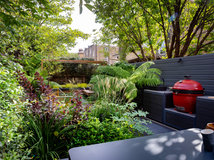
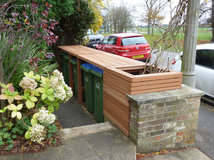
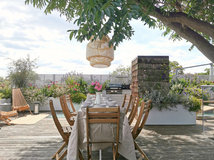
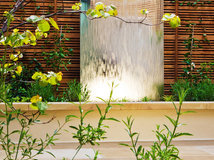
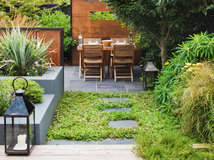


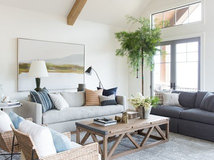
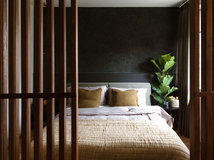
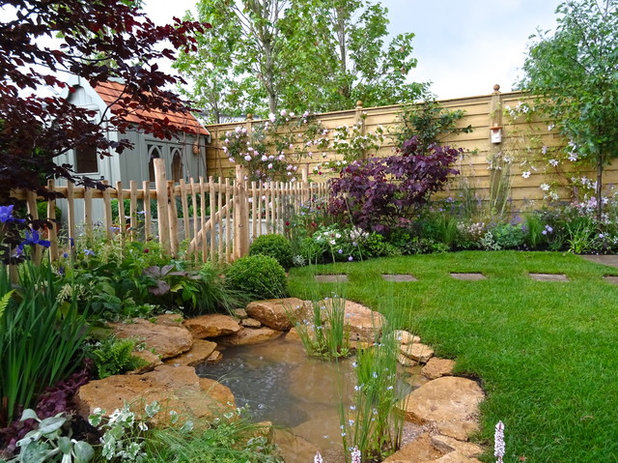
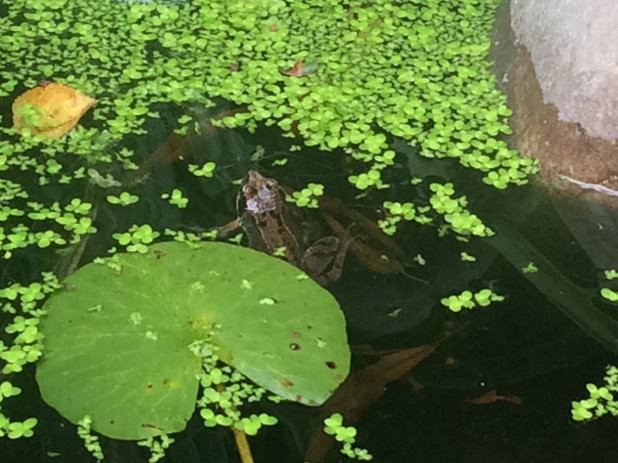
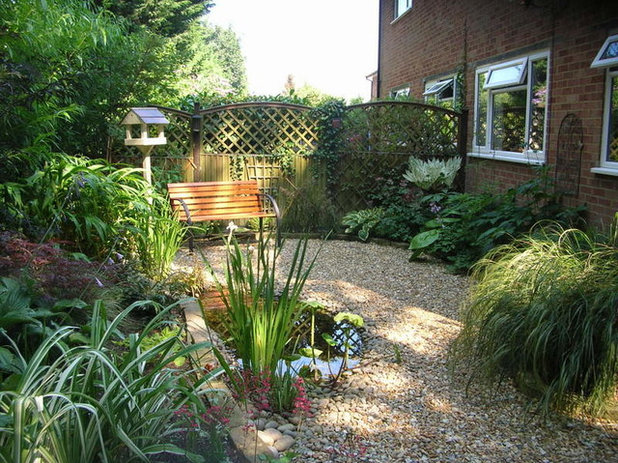
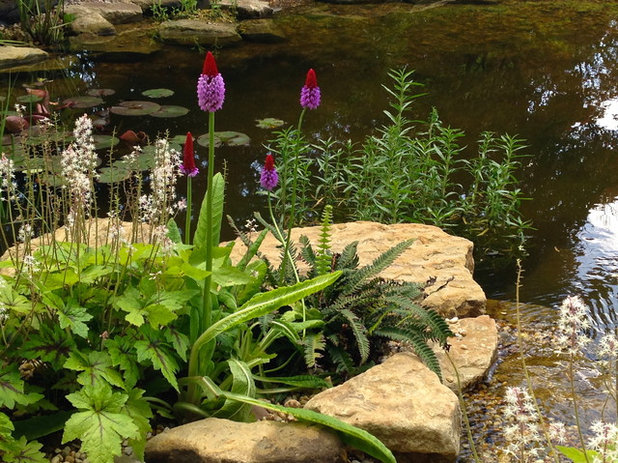
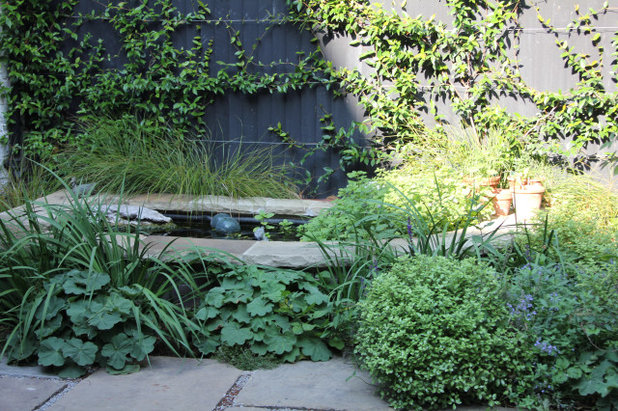
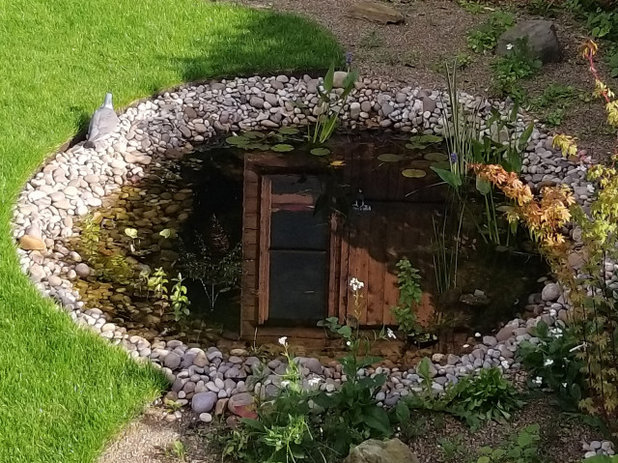
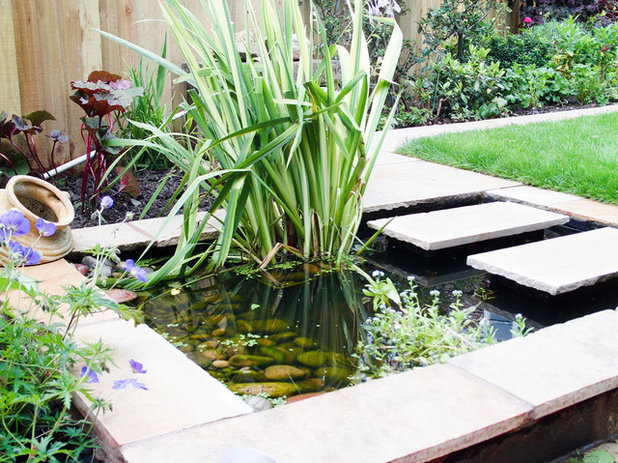
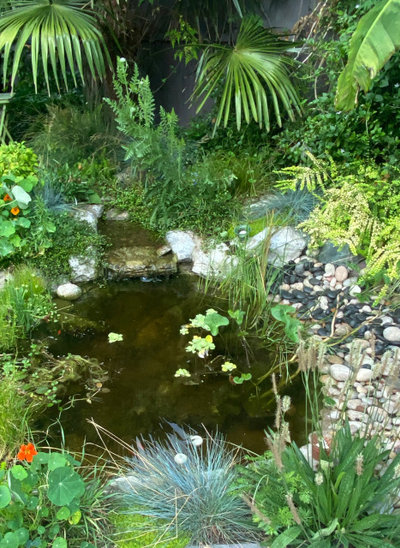
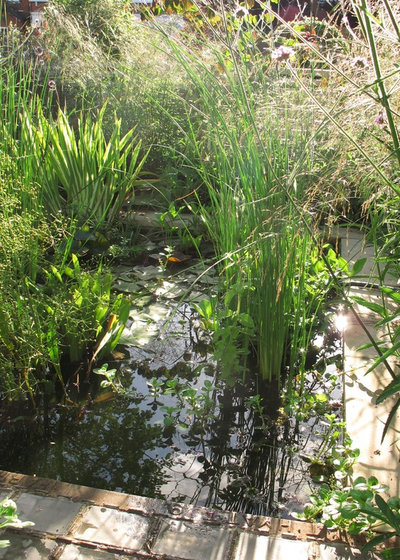
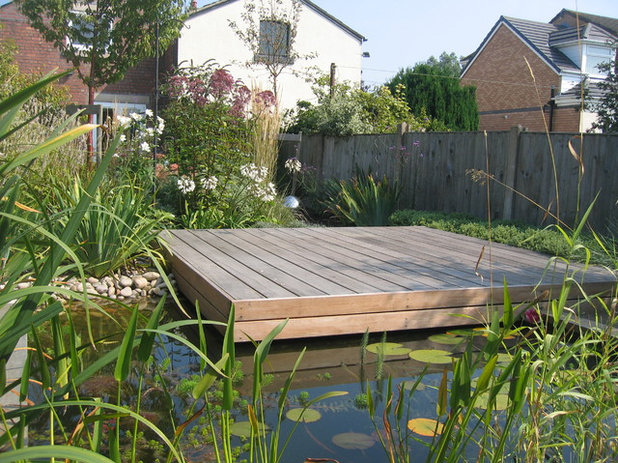
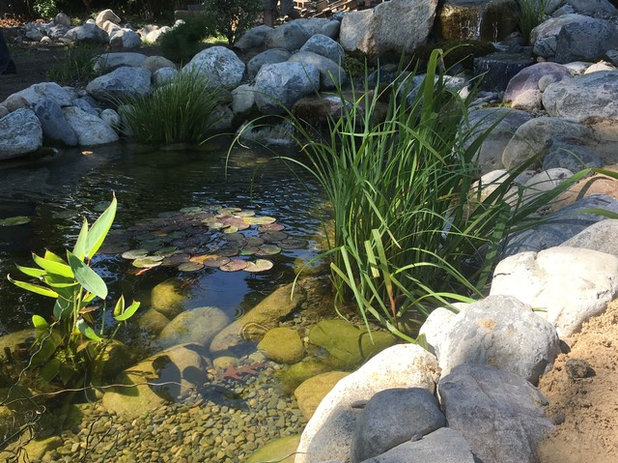
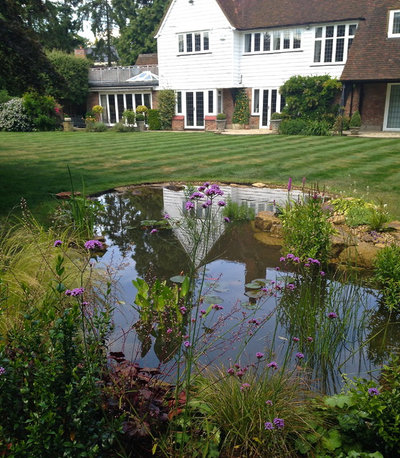
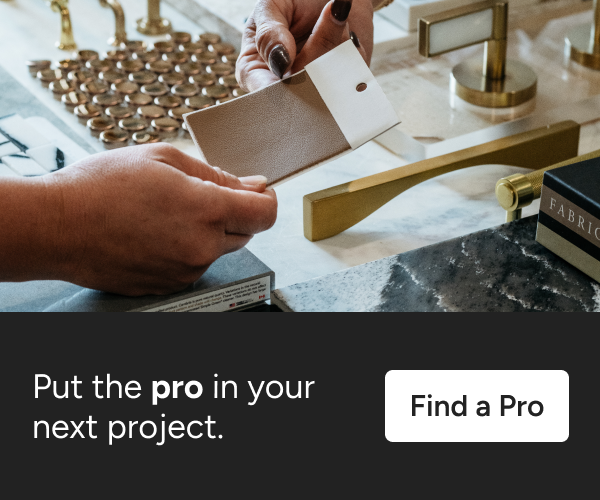

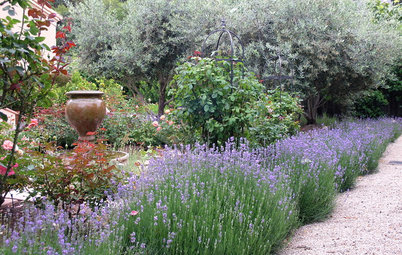
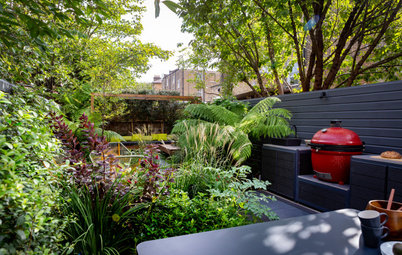

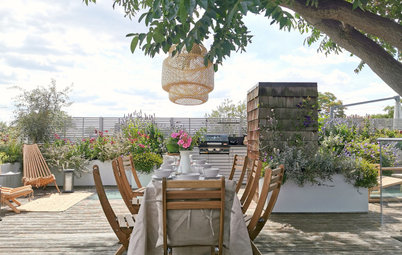
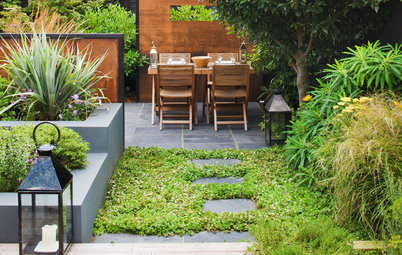
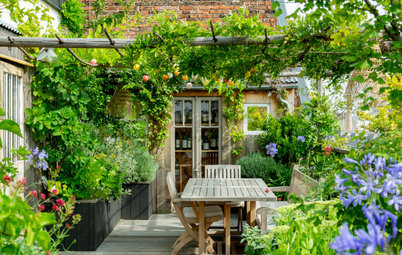
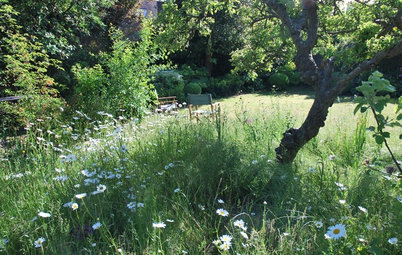
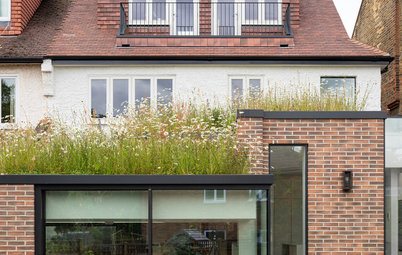
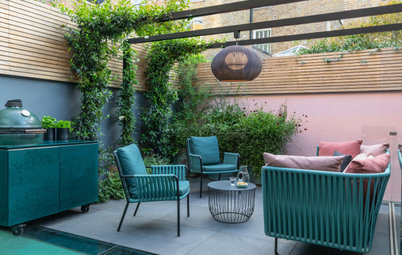
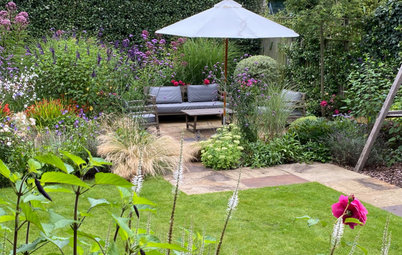
Would LOVE small pond in my garden. However, we have a pond (large old drover's pond) about 3 minutes walk away, and are plagued with vicious mosquitoes (the stripey kind) in the summer, especially when it's warm and still. What do I do to stop mosquitoes breeding in my garden pond? I heard depth was key, and a moving surface?
I have a raised pond with goldfish in it who gobble up any mosquito larvae, so they are never a problem. Being a raised pond it’s not so wildlife friendly although I have found frogs in it and dragonflies seem to like it. It is also easier for me to look after with my arthritis. Watching the fish is very relaxing.
The garden looks insane!